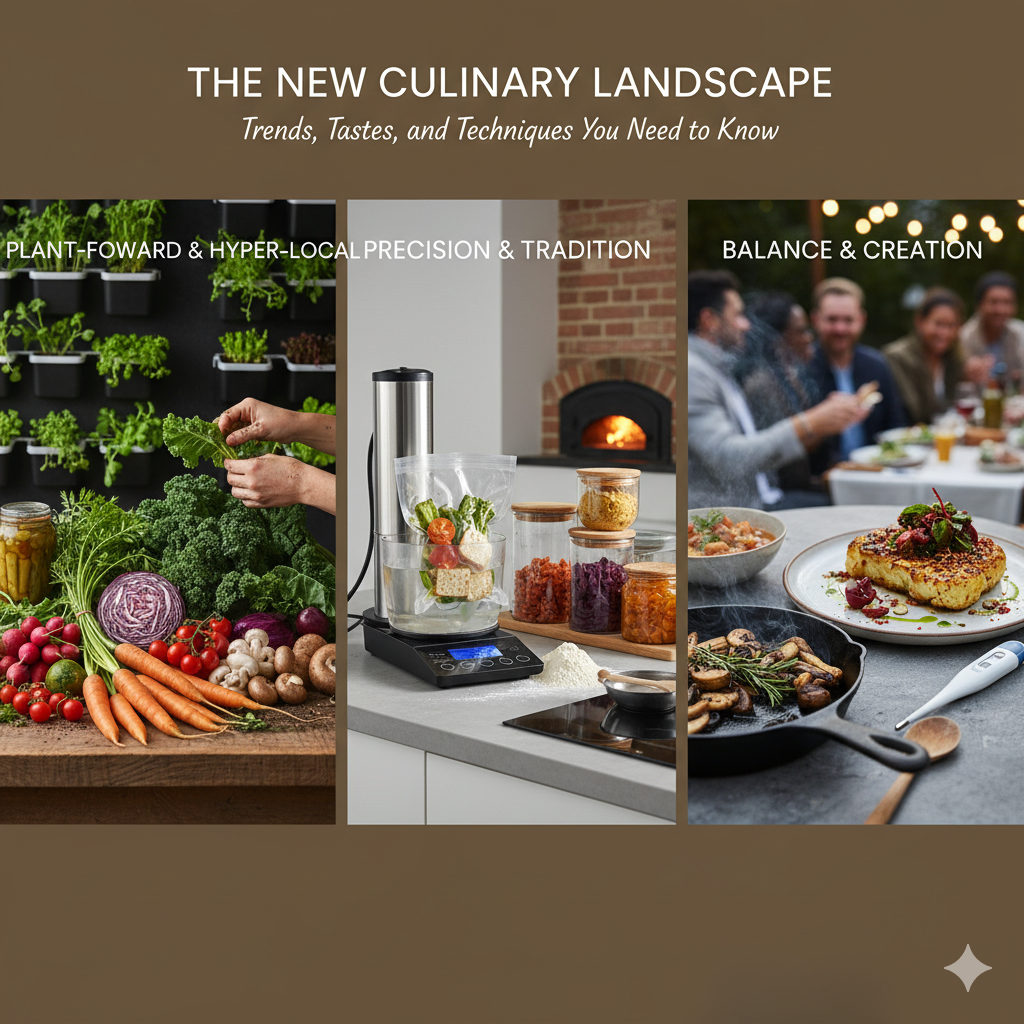
There is an ongoing, intriguing change taking place in the food industry. Concerns about the environment, global awareness, and a shared desire for flavor that tells a story are driving it forward more quickly than before. This is about a fundamental change in the way we source, prepare, and think about the ingredients in our own homes, not only about what’s on restaurant menus. Beyond just following a recipe, the new culinary landscape requires us to be curious, intentional, and open to embracing methods that combine technology and tradition. The strong factors influencing contemporary dining must be understood if you want to remain relevant in the kitchen.
Food that is plant-forward and hyper-local is one of the most powerful modern trends. The increasing need from consumers and home cooks to understand the exact origins of their food has led to a growing focus on seasonal, local, and even backyard-grown fruit. Emphasizing this trend is a noticeable shift away from meat as the plate’s typical main point. Vegetables, hailed for their varied textures and complex flavors, are now the main meal. The use of nose-to-tail vegetable use and fermentation (think homemade pickles or kimchi) are used to make sure that all part of the plant, from beet greens to radish tops, makes it into a meal. Flavor is increased and waste is reduced.
Technically speaking, the contemporary kitchen is becoming into a precision and texture-focused laboratory. Home cooks can now use techniques that were previously only available in professional kitchens. Protein can now be cooked to the ideal, edge-to-edge tenderness thanks to devices like the immersion circulator (for sous vide cooking), and baking has been turned from an art to a repeatable science thanks to accurate digital scales. This is counterbalanced, though, by respect for traditional techniques. Chefs are rediscovering the powerful, concentrated heat of a searing-hot cast-iron pan or the subtle, smokey depth that classic wood-fired ovens impart. A successful modern cook is one who can switch between a traditional slow-simmering stew and a sophisticated thermometer with ease.
Ultimately, the new culinary scene is a celebration of thinking and balance. It urges us to be as mindful of the source of our ingredients as we are of their preparation. By embracing plant-forward diets, seeking out local and seasonal ingredients, and fusing cutting-edge modern equipment with time-tested techniques, you can transform cooking from a routine task into a genuine vehicle for artistic expression and cultural exploration. The best cuisine of days is simple in concept, has a rich flavor, and comes from ethical sources.
